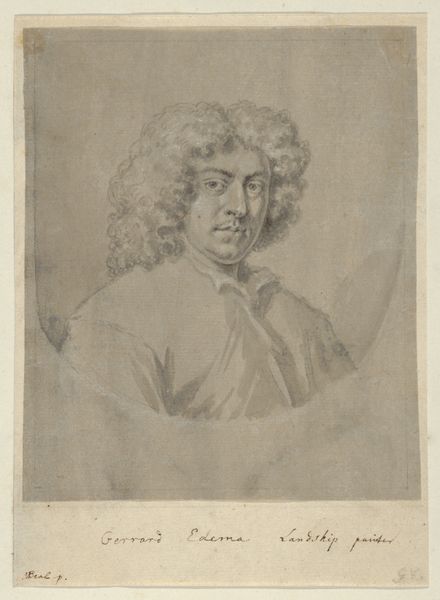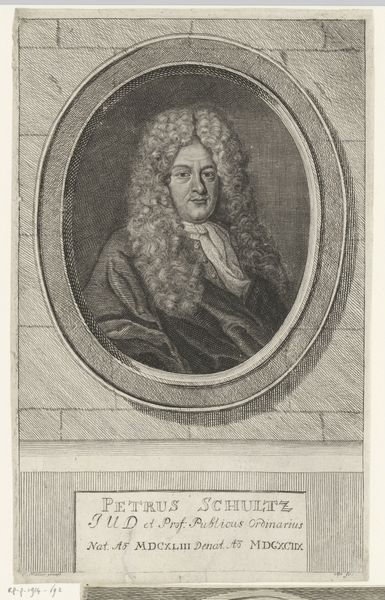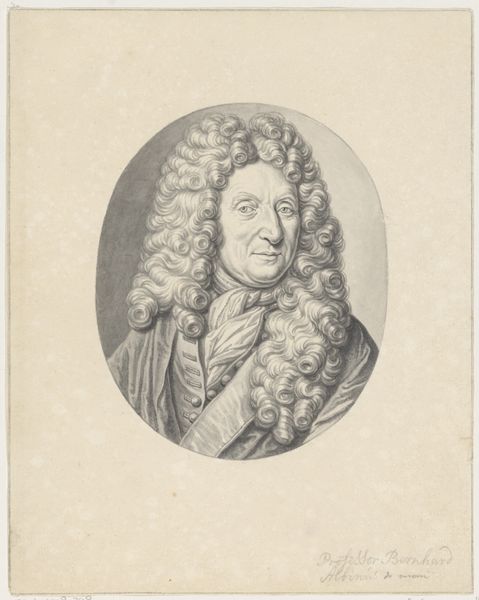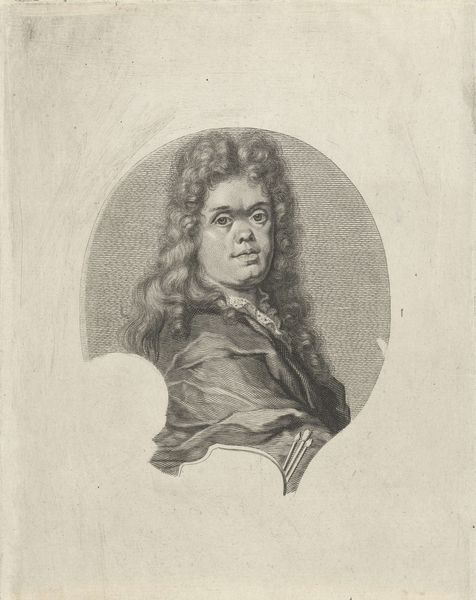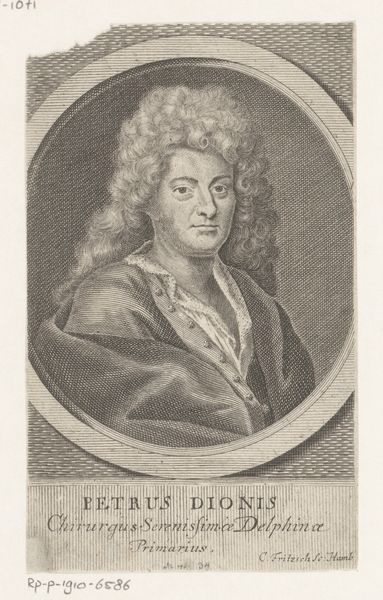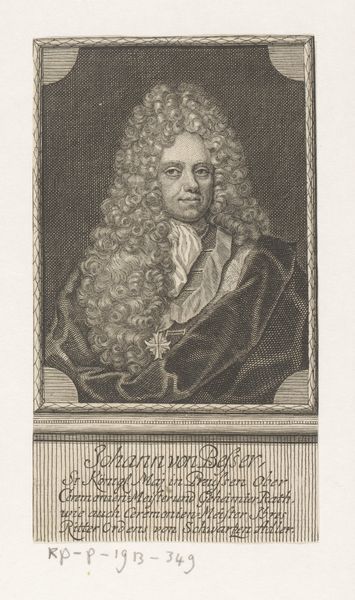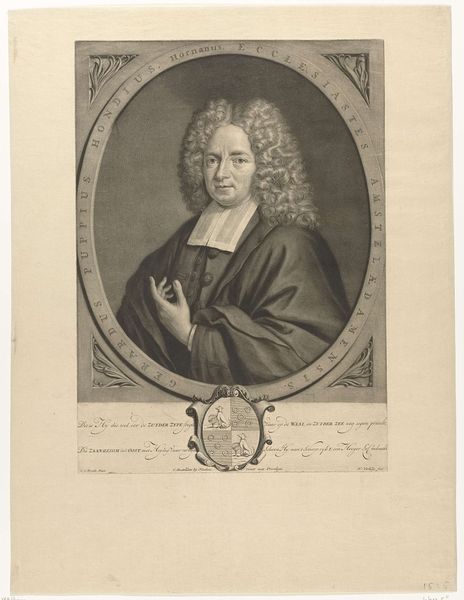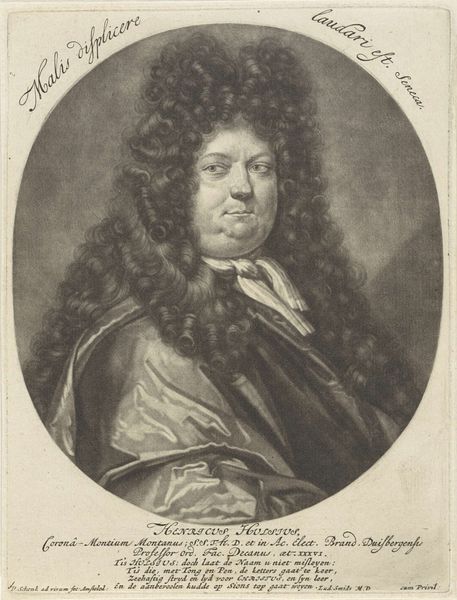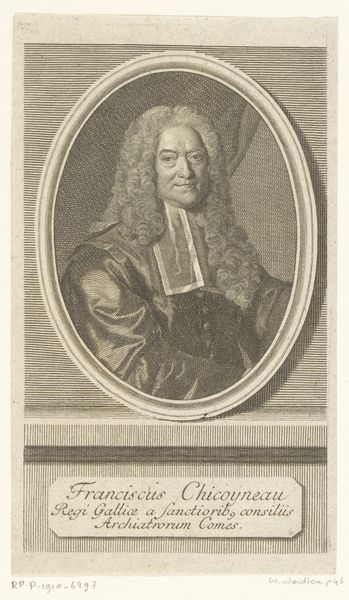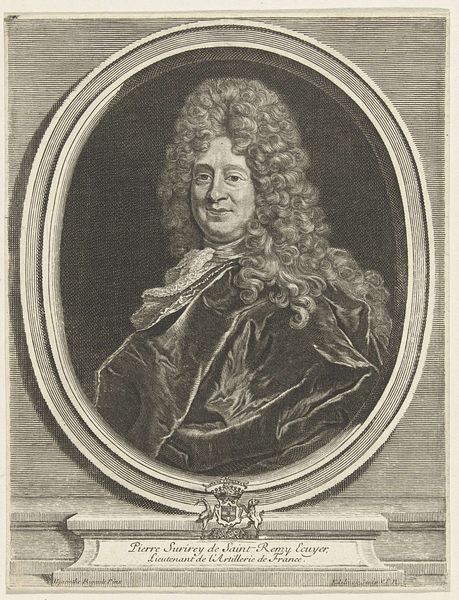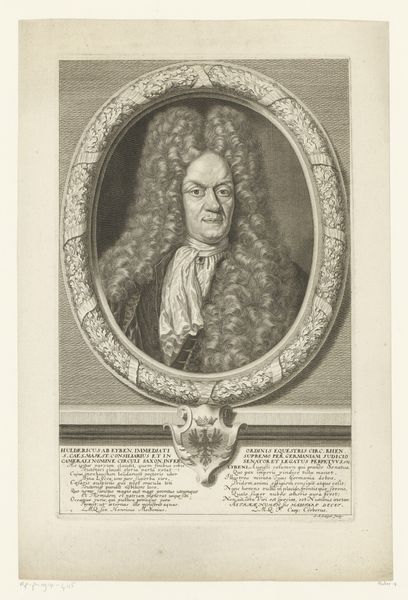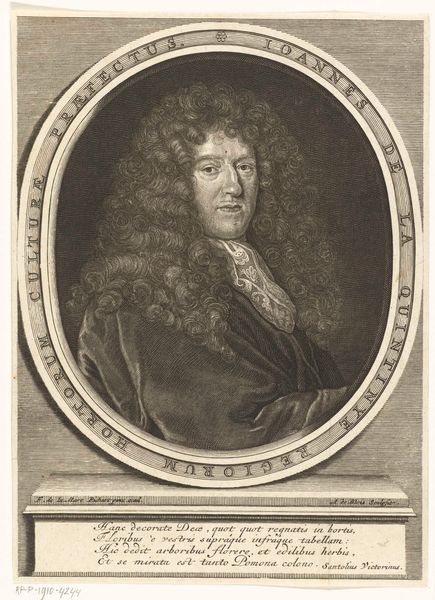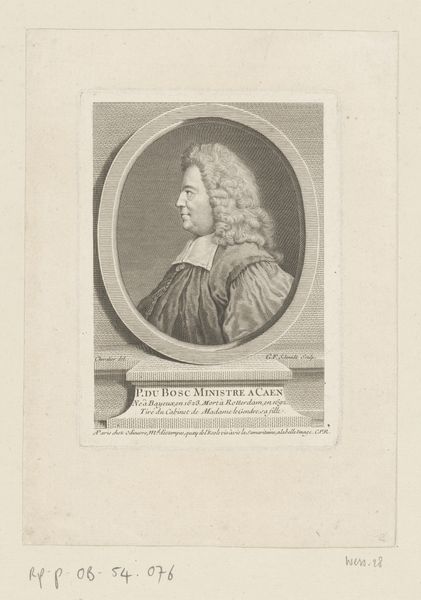
engraving
#
portrait
#
baroque
#
dutch-golden-age
#
engraving
Dimensions: height 143 mm, width 119 mm
Copyright: Rijks Museum: Open Domain
Curator: Here we see "Portret van Gerard De Lairesse," an engraving dating from around 1659 to 1731, residing here at the Rijksmuseum, created by Pieter van Gunst. It is an intense piece of work, isn’t it? Editor: Indeed! My first thought is of contained energy; there’s such dynamic movement in that hair, contrasted with the solid circle framing his likeness. What a contrast! Curator: Absolutely. Consider the painstaking labor required to produce an engraving like this; all those fine lines etched meticulously into the metal plate. And then the repeated process of inking and printing to disseminate the image widely. Think about its purpose. It reproduces De Lairesse for many potential consumers. Editor: The way van Gunst uses light and shadow fascinates me. De Lairesse's gaze holds authority, almost like a Roman emperor. This portrait solidifies him into some lasting monument or figure. What symbolism would the portrait have held for viewers back then? Curator: Portraits served a crucial function, capturing not only the likeness but also the status of the subject. The elaborate wig and fine coat signal wealth and sophistication, meant to project the sitter's standing in society, for a broadening public audience. Editor: I’m also curious about the oval shape, nearly complete but unfinished along the bottom. Could it represent something of a closed societal circle, or a status still incomplete? Perhaps suggesting that even with wealth and renown, something is always just beyond reach. Curator: It may be that that portion of the physical print itself degraded across its lifespan, but this shape frames De Lairesse’s role in cultural consumption and its associated economies, even within its formal strategies. The labor embedded and the circulation it enables. Editor: Such insight into material reality deepens my experience, because thinking about it prompts us to imagine those viewing the engraving through a cultural lens. It offers enduring symbols and messages tied to both art and artist. Curator: Yes, understanding its material construction enriches how we read and understand the image itself, revealing production as central to both cultural production and reproduction. Editor: I will keep these thoughts in mind as I wander.
Comments
No comments
Be the first to comment and join the conversation on the ultimate creative platform.
